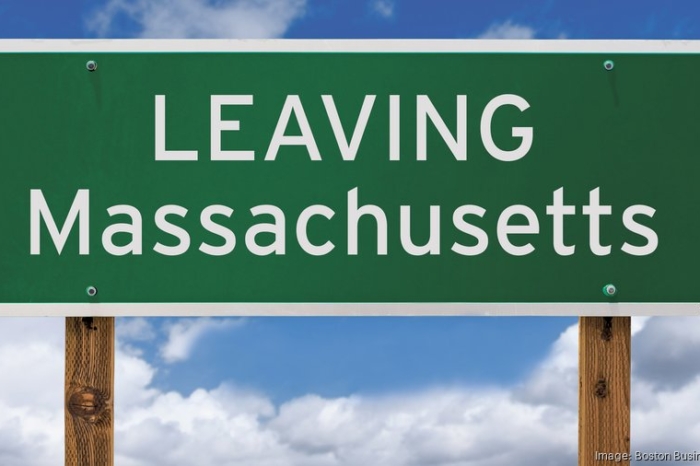Outmigration and the Labor Force
Boston University researchers just released new demographic and financial outmigration data that is cause for concern about recent trends in the Massachusetts labor force.
Among the key facts from the BU research are:
- In the last decade, annual net out migration has increased by a stunning 1,100 percent to 39,000 people.
- There is a growing exodus of prime-age workers (24 to 54)
- High wage earners are leaving Massachusetts, too. The incomes of over half of those leaving the state range from 1.3 to over 2.6 times the state average.
- Wealth and tax revenue collections are leaving with them.
The report of Prof. Mark Williams and graduate students Yuhan Liu and Linglan Xu at the Questrom School of Business builds on findings in the recently published Boston Foundation Indicators Report.
- The loss of prime age workers (25- to 44-year-olds) made up 60 percent of the total losses by age group by 2022.
- The Massachusetts labor force has been trending older since 2013, with the number of workers 55+ years of age increasing by 191,000.
- The population of workers 65+ years of age has doubled since 2007.
- Our natural population growth (births-deaths) decreased by 80 percent from 25,000 in 2001 to just over 5,000 in 2023.
All this may seem incongruous with indicators that Massachusetts is doing better than the nation as a whole:
- The Massachusetts unemployment rate (2.9 percent) is a full percentage point lower than the U.S. national average.
- The labor force participation rate for Massachusetts as of March 2024 (64.8 percent) is more than two percentage points higher than the 62.7 percent national average.
- For workers over the age of 24, Massachusetts’ workforce has the highest percentage of any state in the nation of bachelor’s or higher degree holders at 52.1 percent, an increase of 6.5 percent since 2015.
- Add to that Bureau of Labor Statistics’ data shows that as of January 2024 Massachusetts had 214,000 job openings—a strong indication that employers are still hiring.
So what gives?
One thought that comes to mind is that our low unemployment rate may not be the positive indicator it seems, but rather the flip side of the same outmigration coin. The most obvious reason is that the low unemployment may be more of a reflection of a dwindling worker supply rather than increased demand. The exodus of 25-34 year olds, many of whom are high wage earners, compounds the talent shortage for key growth sectors of our economy – finance, professional services, life sciences and technology. In the short-term, this trend may be beneficial to the unemployed who are able to secure a job that might not have been able to otherwise, however, longer term, it signals the erosion of the talent pool that has been Massachusetts competitive edge for decades. The drain of brain power hurts the state’s tax base and threatens our fiscal stability and economic vibrancy.
Secondly, our labor participation rate is declining. While Massachusetts labor participation rate exceeds the national average, it has declined by two percent since December 2019. In fact, Massachusetts experienced the 4th steepest labor participation decline of any of the states during this period. While retirement may be a primary factor, there are other reasons, too. People are not working for a variety of other reasons – lack of skills, mental health or substance use issues, the inability to find or afford childcare, and the state’s relatively generous safety net. This cohort is not counted in the unemployment rate because they are not actively seeking work. While not tied to out migration directly, these factors compound the labor shortage. Understanding the extent to which Massachusetts’ low unemployment rate can be attributed to these factors is critical to understand, and key in determining the appropriate strategies for growing and developing the workforce.
Lastly, the demographic trends in Massachusetts indicate that no quick fixes are available. As the data make clear, Massachusetts’s low birth rates, aging population and stagnant teenager workforce participation rates, means the state can expect to have a tight labor market for the foreseeable future. To stem the tide of outmigration, Massachusetts must meet this moment by finding new ways to make it more affordable for the middle class to live and work here. Targeted incentives to retain young workers and encourage delayed retirement for older workers through more part-time and flexible work arrangements are a needed strategy as is better integration of social services with workforce training programs to improve the workforce participation rates for those currently on the sidelines. Let’s get to work getting people to work.



